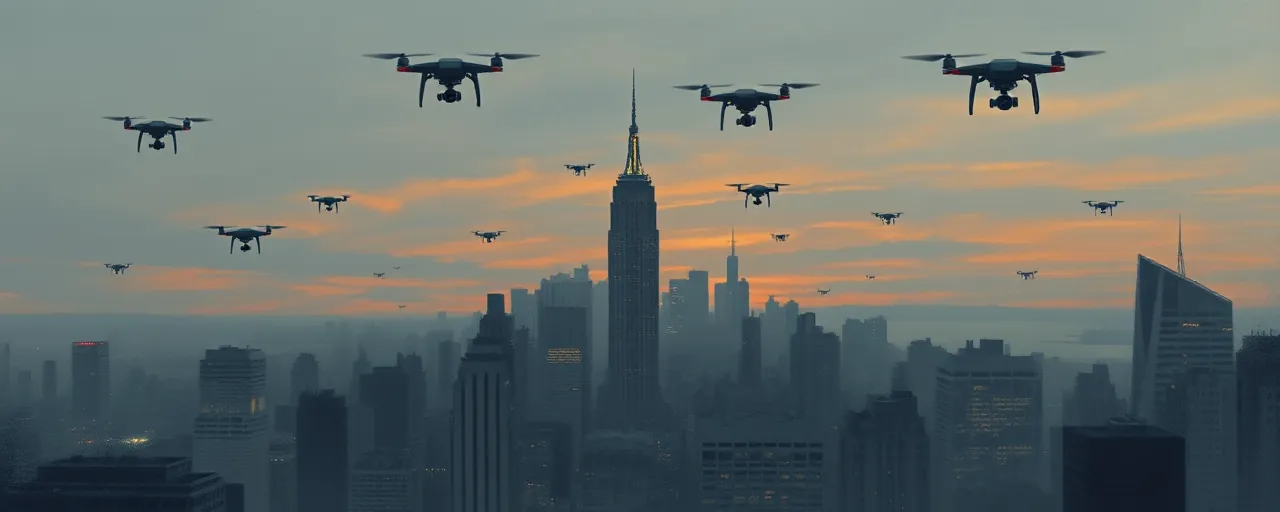A New Frontier in Air Safety
Drones have become a common sight, from hobbyists capturing scenic views to businesses delivering packages. Yet their rise has brought challenges, particularly near airports where a single misstep can endanger lives. The Federal Aviation Administration is stepping up efforts to address these risks, launching a series of tests to detect unauthorized drones and ensure they don’t disrupt air traffic.
Starting April 14 in Cape May, New Jersey, the agency will conduct two weeks of drone-detection trials, a move that underscores the urgency of integrating unmanned aircraft safely into shared airspace. With reports of drones straying too close to planes on the rise, these tests aim to find reliable ways to spot and manage them without compromising the systems that keep aviation running smoothly.
Testing the Waters, Literally
The Cape May trials, led by the FAA’s Center of Excellence for UAS Research, will involve flying large drones and over 100 off-the-shelf models over water near the local ferry terminal. Local first responders, including the Delaware River Bay Authority Police, will join in, bringing a real-world perspective to how these systems might work in high-stakes settings. The public has been asked to steer clear of flying recreational drones in the area during testing to avoid interference.
This isn’t the FAA’s first dive into drone detection. Tests have already taken place in Alaska, with more planned for New Mexico, North Dakota, and Mississippi later this year. Each location offers unique conditions, helping researchers understand how detection technologies perform across different environments, from coastal towns to open plains.
Balancing Innovation and Safety
Unauthorized drones near airports aren’t just a nuisance; they’re a genuine hazard. Between January and March last year, pilots reported 200 sightings, with a handful forcing evasive maneuvers. Technologies like radar, radio-frequency scanners, and AI-driven tracking systems show promise in spotting drones early, but they’re not foolproof. Some struggle to detect drones that fly without emitting signals, while others risk misidentifying harmless objects as threats.
On the flip side, overly aggressive detection could disrupt legitimate drone operations or, worse, interfere with aircraft navigation systems. GPS jamming, for instance, has caused headaches for pilots in regions with heavy electronic interference. The FAA’s challenge is to fine-tune these tools so they catch rogue drones without throwing a wrench into the broader aviation ecosystem.
Voices From the Ground
Aviation experts emphasize the need for precision. A retired air traffic controller from Virginia, who spent decades managing busy skies, noted that even a brief disruption in navigation signals could cascade into delays or safety risks. Meanwhile, drone enthusiasts argue for clearer rules and better education to prevent accidental violations. Many hobbyists, unaware of restricted zones, simply want to fly responsibly.
The FAA has tried to bridge this gap through initiatives like Drone Safety Day, set for April 26 this year, which promotes safe practices and registration requirements. Still, enforcement remains a sticking point. Since 2021, over 2,000 drone sightings near airports have been logged, a sign that awareness campaigns alone aren’t enough to curb risky behavior.
Looking Ahead
The Cape May tests mark a step toward a future where drones and planes coexist without incident. By refining detection systems, the FAA hopes to build a framework that protects passengers while fostering innovation in drone technology. The data gathered will inform not just technical tweaks but also policies that could shape how drones are regulated for years to come.
For now, the skies remain a shared space, one where vigilance and collaboration are key. As the trials unfold, they offer a chance to address real dangers while keeping the door open to the possibilities drones bring, from aerial photography to life-saving deliveries. The question isn’t whether drones belong in the air, but how to ensure they fly safely alongside everything else up there.
